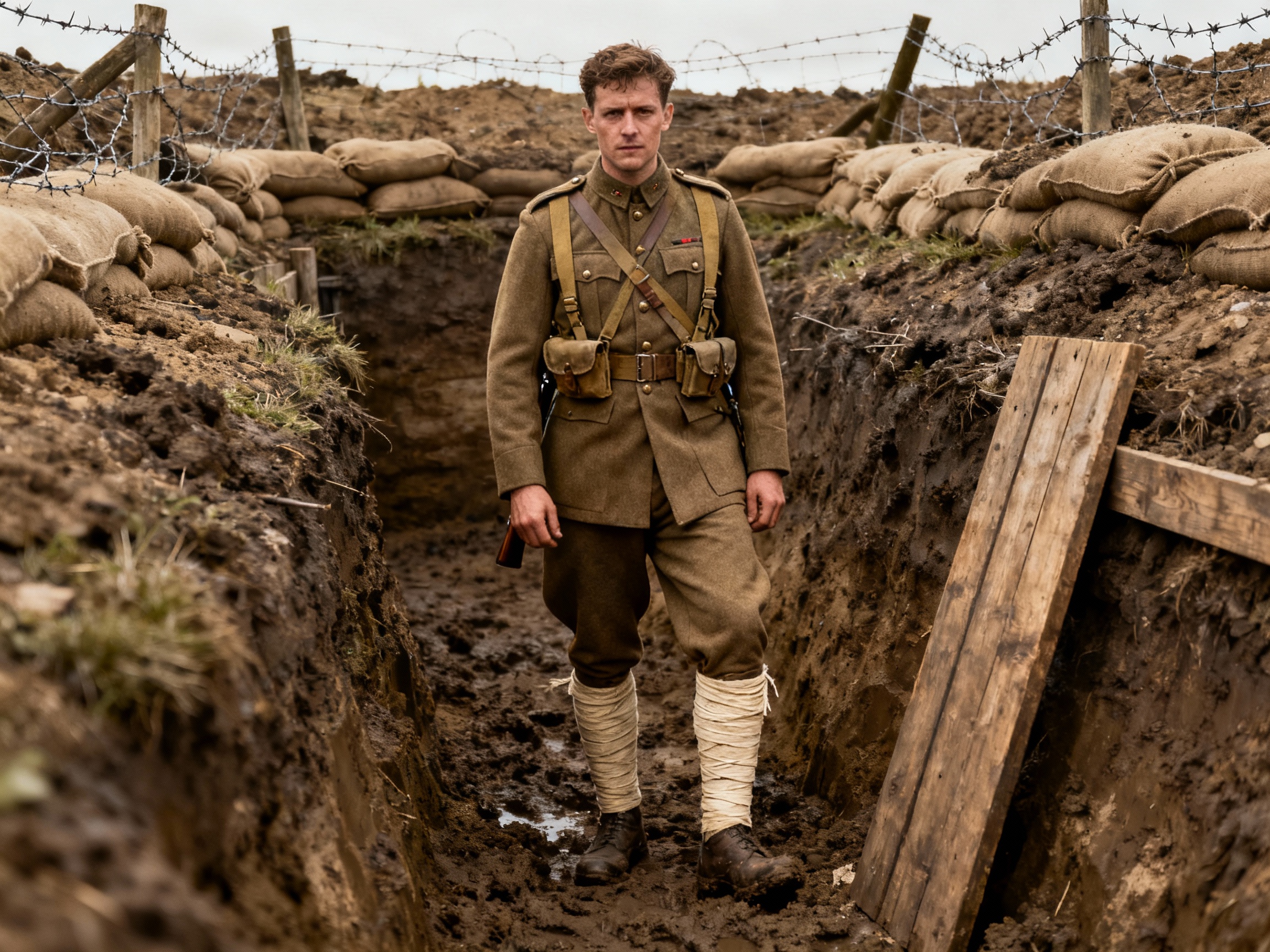
WW1 British Uniform Guide: From Khaki Design to Modern Military Fashion
Published on Nov 17, 2025
Introduction
The first world war British uniform remains one of history’s most recognizable military outfits, symbolizing the resilience and adaptability of soldiers who served in tough conditions. For collectors, reenactors, and history enthusiasts, it offers an authentic glimpse into military fashion and the daily realities faced in the trenches. Unlike the elaborate dress uniforms seen in earlier eras, the WW1 British uniform prioritized practicality—each piece had a story, shaped by the mud, weather, and constant movement of warfare. Exploring its design, materials, pros and cons, and its influence on later military clothing reveals why it still captivates interest more than a century later.
Features of WW1 British Uniform
The standard British uniform of the First World War, commonly associated with the “Tommy,” included several core items:
- Tunic: The Service Dress tunic, introduced in 1902, was made of thick khaki wool. It featured a stand-and-fall collar, pleated chest pockets, and distinctive brass buttons.
- Trousers: Loose-fitting wool trousers, practical for both battle and camp life. These lacked the extra features of WW2 trousers but offered durability.
- Puttees: Long strips of woolen cloth wrapped around the lower legs for protection against mud and debris.
- Cap: The peaked Service Dress cap was standard, though steel helmets were issued from 1916 onward for safety.
- Webbing: Soldiers carried essential gear in a set of cotton webbing consisting of pouches and straps for ammunition, water, and tools.
Materials focused on wool and cotton, chosen for their ruggedness and insulation. The uniform’s color—khaki—was adopted specifically for camouflage, marking a shift from brighter pre-war attire.
Historical Context and Design Evolution
Before World War I, British soldiers wore bright red coats and elaborate regalia, making them easy targets on the battlefield. The outbreak of WW1 changed everything. Trench warfare brought new environmental challenges, prompting a shift to simpler, more practical uniforms.
- Khaki Service Dress: This became standard, replacing colorful dress uniforms. Khaki provided better concealment in muddy conditions.
- Puttees: Initially adopted for cavalry, these became standard, protecting soldiers from trench mud.
- Steel Helmet: The Brodie helmet, introduced in 1916, improved protection against shrapnel and replaced the cloth cap in combat zones.
- Officer vs. Enlisted Differences: Officers retained subtle distinctions, wearing softer tunics and sometimes Sam Browne belts, while enlisted men had more standardized gear.
The evolution continued after WW1, influencing WW2 designs, especially the development of new trousers and fabrics aimed at further improving comfort and safety.
Pros and Cons: Practical Aspects
Advantages
- Durability: Wool was tough and provided some insulation in cold, damp trenches.
- Camouflage: Khaki color reduced visibility, improving soldier safety on the battlefield.
- Functionality: Tunics and webbing could carry essential gear, freeing soldiers’ hands.
Disadvantages
- Weight: Wool uniforms, especially when wet, became heavy and uncomfortable.
- Heat: The thick material could trap heat, making summer months challenging.
- Limited Movement: The loose, baggy trousers allowed movement but sometimes snagged or became cumbersome, especially compared to later WW2 trousers.
The uniform’s strengths lay in its adaptability. Yet, it was far from perfect, often requiring soldiers to make field adjustments.
Real-World Example: The Imperial War Museum Collection
The Imperial War Museum (IWM), London, displays original WW1 British uniforms that reflect wear, repairs, and field modifications. One exhibit features the Service Dress tunic worn by Private Frederick George Sidney. The tunic shows reinforced elbows and patched pockets—a testament to the material’s durability but also its need for regular repair.
Museum records note that soldiers frequently altered the fit and added extras, such as lining or personal badges, to improve comfort and identity. The evolution seen in these artifacts illustrates both the strengths and drawbacks noted by veterans and historians.
FAQs
What materials were used in First World War British uniforms?
Wool was the main fabric for tunics and trousers, valued for warmth and durability. Cotton appeared in items like webbing and summer shirts.
How did the uniform color help soldiers?
The switch to khaki provided much-needed camouflage in muddy, wooded, and open fields, giving British troops some concealment from enemy fire.
Were there different uniforms for officers?
Yes, officers' uniforms were tailored for quality, often with additional insignia or leather belts, distinguishing them from standard-issue enlisted uniforms.
What changed between WW1 and WW2 uniforms?
WW2 trousers gained better pockets and improved patterns, while new materials reduced weight and increased comfort. The steel helmet also became standard earlier in service.
Did soldiers personalize their uniforms?
Many soldiers added extra linings, repaired tears, and attached personal items to collars or pockets to adapt to daily trench life and maintain morale.
Conclusion
The WW1 British uniform not only signified the practical needs of soldiers facing the grim realities of trench warfare but also marked a turning point in military clothing design. Its emphasis on functionality, camouflage, and durability set a precedent that influenced subsequent military uniforms worldwide. The stories embedded in these garments—each patch, wear mark, and repair—echo the resilience and ingenuity of soldiers who endured brutal conditions, turning these uniforms into symbols of perseverance.
Understanding the uniform's evolution offers a clearer insight into how military needs shape attire—from the bright, elaborate dress uniforms of the past to the utilitarian khakis of WW1. Today, collectors and historians see these uniforms as tangible links to a pivotal moment in history, revealing both the limitations and innovations of wartime apparel. They remind us of the importance of adaptive design in the face of adversity, highlighting how clothing can be a tool for survival and identity in the chaos of war.
